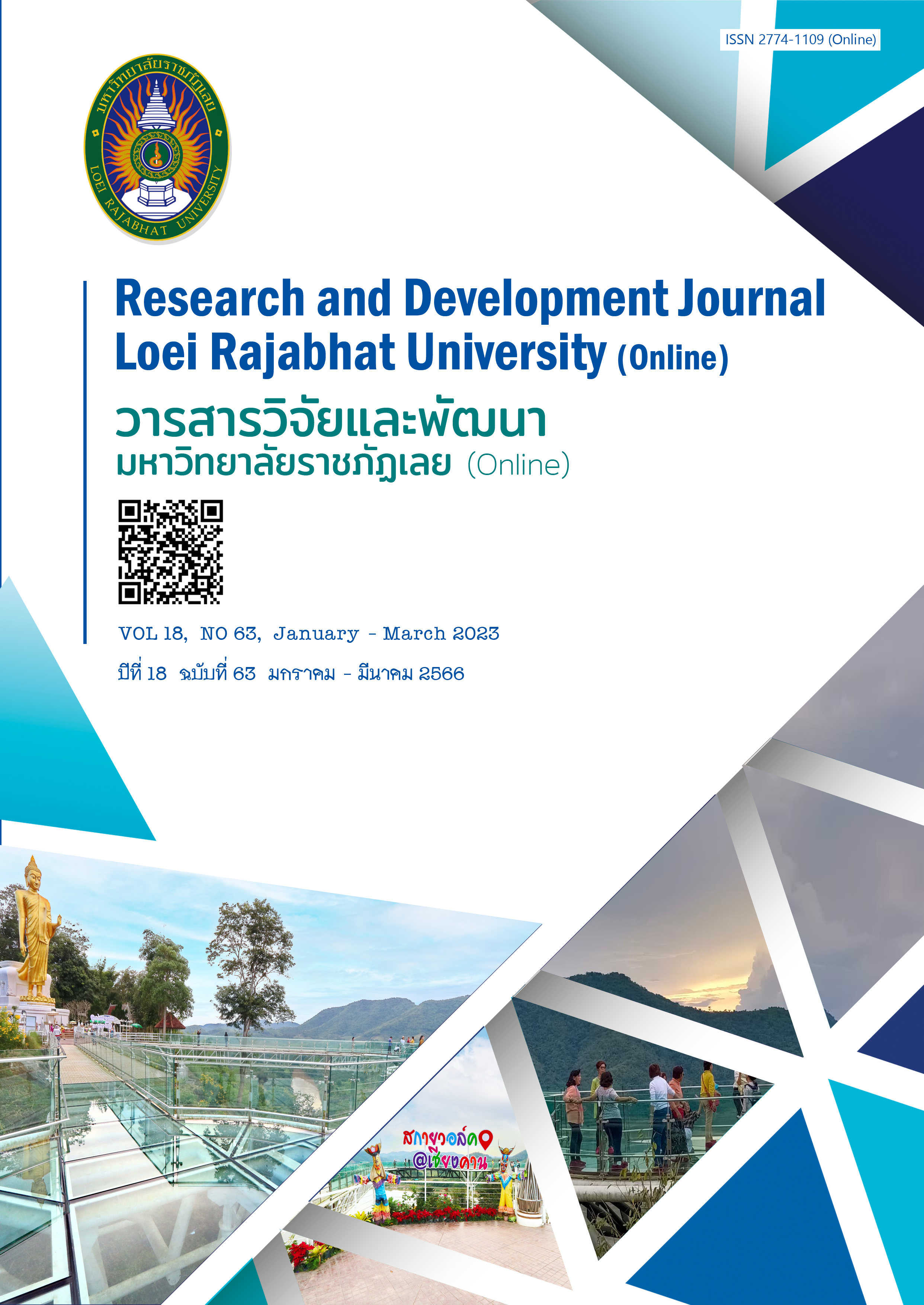Guidelines for Development Marketing Strategy Build Loyalty for Sport Tourism Attendance Professional Football Buriram United Club in Buriram Province
Keywords:
marketing strategy, loyalty, sports tourism, Buriram united associationAbstract
This research is the quantitative research. The objective is to study the behavior and needs of sports tourism to the marketing mix that affects to make loyalty in sport tourists. By using the questionnaire is the tool of research and to specify a sampling group by purposive sampling, to be total 400 people of sport tourists who visit the football competition of Buriram United Association, during 2018. To analyze the data by using frequency distribution and Median, as well as to test with chi square and correlation between the individual factor and marketing behavior, the opinion of marketing mix, and the loyalty by Multiple Correlation Analysis and Multiple Regression Analysis. The result of research was found that the sport tourists would educate data from the friends and online media before attending the competition to be 83.75 percentage, next to travel to visit by themselves or groups to be 97 percentage as well as, to travel by their vehicles to be 91 percentage to arrive before watching the competition and to stay after finished game for one day. Normally, the tourists often come to watch the competition and go home, not resting or staying. So, the tourists who stay here, will use service of local residence for more than one day to be 91.50 percentage. In addition, these tourists who used to buy and use the products of sport club, always repeating purchase. To have the most satisfaction of famous of association, service of competition data, field management, agree with price of products and souvenirs to be worthwhile and reliability of marketing mix, delight to recommend by word of mouth, buy or use repeating service. So, from analyzing that result was found that the individual of personnel has had relation with behavior and needs to attend the professional football match, statistically significant at the .05 level. By multiple correlation results of the marketing mix factor has have positive relation with loyalty every dimension, statistically significant at the .01 level. As well as, multiple regression of marketing mix factor; Product, Price, Physical and Process, statistically significant at the .05 level. For the other marketing mix factor, was not found that has had the relation with loyalty overall.
References
เกศสุดา เข้มแข็ง. (2550). ทัศนคติและความพึงพอใจที่มีต่อระบบฐานข้อมูลบุคลากรภาครัฐภายใต้โครงการจ่ายตรงสวัสดิการรักษาพยาบาลข้าราชการ (รายงานการวิจัย). ปทุมธานี: มหาวิทยาลัยเทคโนโลยีราชมงคลธัญบุรี.
ไทยลีกออนไลน์. (2561). สถิติผู้เข้าชมไทยลีก ปี 2561. สืบค้นจาก https://www.thaileague.co.th/official/?r=Site/Index
ไทยรัฐ. (2556). บุรีรัมย์ฯ จ่อเปิดตัวโรงแรมหรูไสตล์ฟุตบอลแห่งแรกในเมืองไทย. สืบค้นจาก http://www.thairath.co.th
นพพล ครบปรัชญา. (2558). การสร้างความจงรักภักดีสำหรับนักท่องเที่ยวชาวญี่ปุ่นในการมาท่องเที่ยวประเทศไทย (วิทยานิพนธ์ปริญญามหาบัณฑิต). สถาบันบัณฑิตพัฒนบริหารศาสตร์, กรุงเทพฯ.
บุญเลิศ จิตตั้งวัฒนา. (2548). การพัฒนาการท่องเที่ยวแบบยั่งยืน. กรุงเทพฯ: เพรส แอนด์ดีไซน์.
รชพร จันทร์สว่าง. (2545). การท่องเที่ยวเชิงกีฬา. นนทบุรี: สำนักพิมพ์มหาวิทยาลัยสุโขทัยธรรมาธิราช.
วัชระ เชียงกูล. (2558). แนวทางการพัฒนาการท่องเที่ยวจังหวัดบุรีรัมย์ เพื่อตอบสนองพฤติกรรมการท่องเที่ยวของนักท่องเที่ยวเชิงกีฬา (วิทยานิพนธ์ปริญญามหาบัณฑิต). สถาบันบัณฑิตพัฒนบริหารศาสตร์, กรุงเทพฯ.
ศิริวรรณ เสรีรัตน์, ปริญ ลักษิตานนท์ และ ศุภร เสรีรัตน์ . (2552). การบริหารการตลาดยุคใหม่. กรุงเทพฯ: พัฒนาศึกษา.
ศูนย์วิจัยกสิกรไทย. (2561). ต่างชาติเที่ยวไทยปี 2561 เป้าหมายรายได้สู่ 2 ล้านล้านบาท (กระแสทรรศน์ ฉบับที่ 2895) สืบค้นจาก https://www.kasikornresearch.com/th/analysis/kecon/business/Pages/36759.aspx
โศรยา หอมชื่น. (2551). ศตวรรษที่ 21 ของการพัฒนาการท่องเที่ยวเชิงกีฬา (จุลสารวิชาการอิเลคทรอนิกส์การท่องเที่ยวแห่งประเทศไทย). สืบค้นจาก http://www.etatjournal.com/upload/225/2SportTourism.pdf
สภาอุตสาหกรรมการท่องเที่ยวแห่งประเทศไทย. (2553). เกี่ยวกับสภาฯ. สืบค้นจาก http://www.thailandtourismcouncil.org/th/about.php
Assael, H. (1984). Consumer Behavior and Marketing Action. Boston, MA: Kent.
Griffin, J. (1995). Customer loyalty: How to Earn it, How to keep it. United States of America: An imprint of Free Press.
Gronroos, C. (2000). Service Management and Marketing A Customer Relationship Management Approach. Hoboken: John Wiley and Sons, Ltd.
Hritz, N., and Ross, C. (2010). The Perceived Impacts of Sport Tourism: An Urban Host Community Perspective. Journal of Sport Management, 24, 119-138.
Likert, R. (1932). A Technique for the Measurement of Attitude. Archives of Psychology, 22(140), 55.
Weed, M. and Chris, B. (1997). Influences on Sport Tourism Relations in Britain: The Effects of Government Policy. Tourism Recreation Research, 22(2), 5-12.
Yamane, T. (1973). Statistics: An Introductory Analysis (3rd ed). New York: Harper and Row Publication.
Downloads
Published
How to Cite
Issue
Section
License
Copyright (c) 2023 Research and Development Journal, Loei Rajabhat University

This work is licensed under a Creative Commons Attribution-NonCommercial-NoDerivatives 4.0 International License.
ข้อความที่ปรากฎในวารสารฉบับนี้เป็นความคิดเห็นของผู้เขียนแต่ละท่าน สถาบันวิจัยและพัฒนา มหาวิทยาลัยราชภัฏเลย และกองบรรณาธิการ ไม่จำเป็นต้องเห็นด้วยและไม่มีส่วนรับผิดชอบใดๆ
สถาบันวิจัยและพัฒนา มหาวิทยาลัยราชภัฏเลย ขอให้ผู้อ่านอ้างอิงในกรณีที่ท่านคัดลอกเนื้อหาบทความในวารสารฉบับนี้






